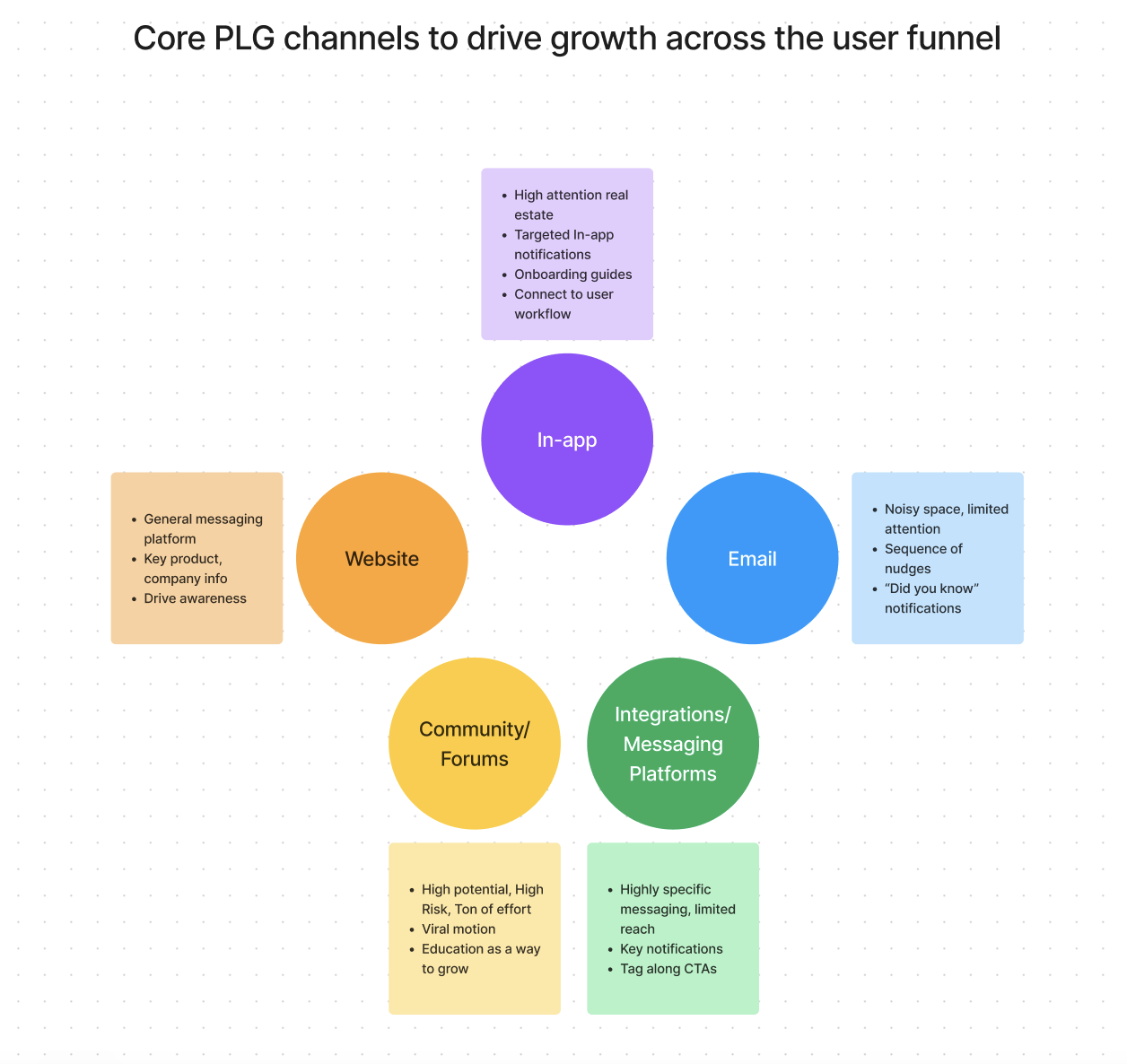A Guide to PLG Channels for User Communication

At this point, marketing channels are well understood. However, product-led growth channels are still evolving.
I have used In-app, Email, Slack, Website (including blog), and user communities as key channels to maximize impact on business metrics. The PLG approach is all about finding creative ideas and channels. For e.g. AirBnB is storied for figuring out that Craigslist APIs are open and using those APIs to generate listings on their own platform. Their channel in this scenario was open marketplace APIs. So, the following channels serve as a starting point and not as an exhaustive list.
In-app: This is usually the core difference between a marketing channel and a PLG channel. You get the most bang for your buck when communicating with your users inside your app. While in the app, users are thinking about your product, using your product, and carrying a high brand perception (in most cases) for your product. One obvious way to drive user actions is in-app notifications. Many companies use Pendo (Other are UserFlow, WalkMe, etc) as tools for in-app notifications. While this channel is effective, there are a couple key challenges:
Noise: A key challenge with in-app notifications is balancing the volume. Otherwise, they can create noise inside the app and negatively impact your product affinity.
Low action rate: We have all trained our minds to dismiss any popups/ads in your way. So, you want these notifications to be super targeted and served in a way that they are not distractions from what users are planning to do.
You want your in-app callouts to be part of your core workflow. If the goal is to drive attention to a new feature, identify how the new feature can be useful to existing core users and how does it extend the use cases of the core product. Then, serve relevant calls to action in those connecting places. At Sentry, we connect Performance monitoring and Error Monitoring issues through Releases since that’s where the two product lines find a common meaning of regressions. Another place we make the connection is through weekly email email reports that include trends across both product lines.
Email: This has been a key marketing channel for a long time. Companies often send a sequence of emails related to new signups, free trials, new feature launches, etc. In my opinion, email channels have become table stakes but are no longer effective for marketing-oriented emails. Either, email clients already filter these emails out to promotional sections or users have grown trained on ignoring these emails. Everyone’s emails are overloaded with millions of promotional content and they drive limited action. On the other side, the channel still works well for serving relevant operational updates to users (for e.g. subscription changes, user invites, and critical alerts).
Integrations / Chat: Slack and Discord (or insert your favorite workflow integration) are becoming new playgrounds to extend your customer reach. You want to be super cautious here and keep the information relevant and focused. Otherwise, you risk losing the integration adoption and that will likely have negative impact on your goal. Worst yet, someone will call you out on a social media platform for creating noise on these highly productive channels.
Community/Forums: These communities exist in various formats and places including public Slack or Discord channels, podcasts, technology or interest-specific communities like Python or ML-based communities, meetup groups, your own forums, etc. You want to pick a few that align with your target user persona, be super involved in those places, and constantly nurture these communities for a long time. It is almost impossible to drive short-term ROI on these places and rightly so.
Website: At this time, companies have perfected highlighting key information on their website. So, I will skip this section. The only additional thing I will say is that there’s a lot of power in surfacing your upcoming webinar or public events on the website home page.
Bonus- Sandbox: At Sentry, we added a Sandbox environment for potential users to be able to try Sentry without Signup. An interesting use case of this is to use the Sandbox for existing users/customers. As we launch new features, we can showcase the new feature value and build stories in our Sandbox environment. The environment is gated by an email field. So, we know who’s interested in what part of the product and can later run specific email nurture campaigns based on this data.